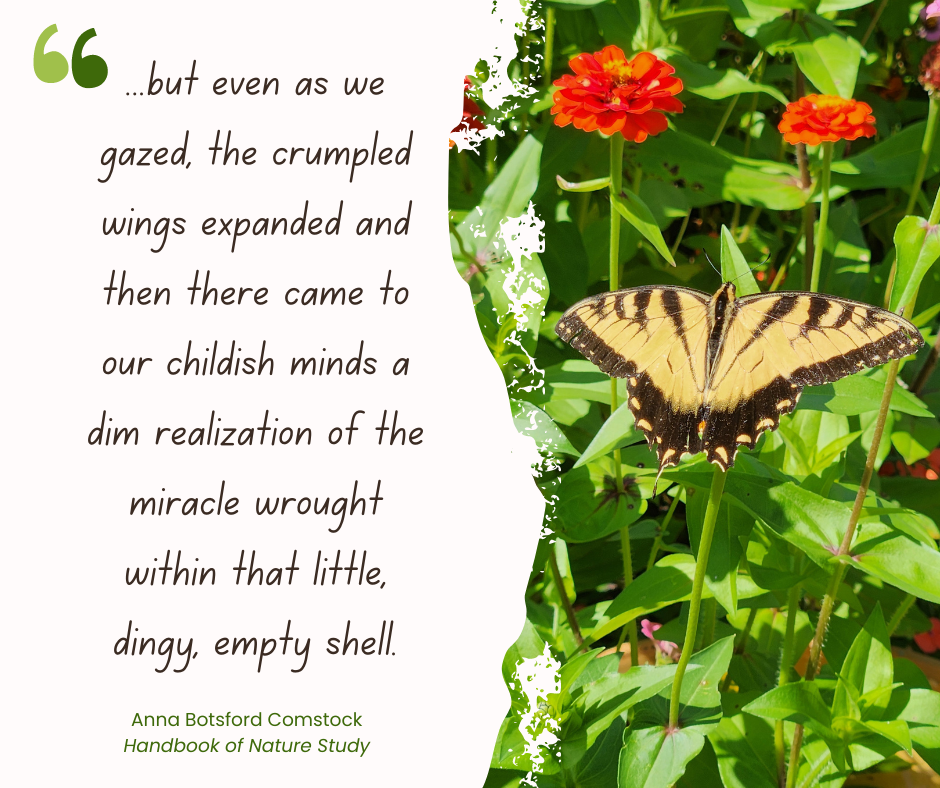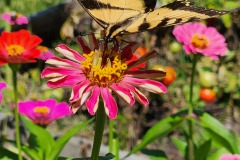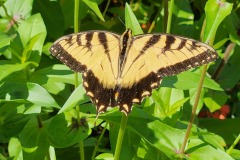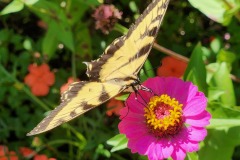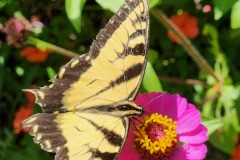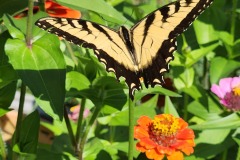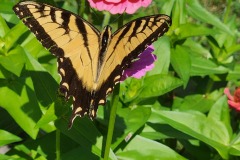Field Notes: Tiger Swallowtail
Comstock’s memory of a black swallowtail’s hatching affirms that watching a caterpillar’s transformation into a butterfly can be one of the most captivating and memorable experiences a child has.
What struck me first about the tiger swallowtail I watched in the garden was its fearlessness. It was no more concerned to be fluttering around a giant than if I were another flower. My phone was sufficient to capture some pictures.
The second thing I noticed was its broken tail. It’s very unusual to find a perfect butterfly! They seem fragile, yet sometimes they can sustain much more damage than this one had and still last. I wonder how the broken tail happened.
The Handbook of Nature Study didn’t have a section devoted to the tiger swallowtail, but it did have a photo of one in the section on the black swallowtail. Comstock is a wonderfully descriptive writer, and it was fun to read her account of two caterpillars meeting on a caraway stem. Each of them
drew back the head and butted each other like billy goats, whack! whack! Then both turned laboriously around and hurried off in a panic.
But I had to go to this butterfly identification site to learn that
- Female swallowtails lay their green eggs on plants in Magnolia and rose families;
- Males can be seen sometimes “puddling” — drinking from puddles together in damp places, and ingesting sodium ions that help them live longer;
- While the young caterpillars resemble brown and white bird droppings, older ones are a magnificent green with false eyespots that give them a protective resemblance to a snake head; and
- When poked, they project a pair of bright orange glands and secrete a stinky substance that can be wiped on the offending animal
All of that is pretty amazing! Caterpillars and butterflies are some of the best subjects for triggering children’s interest and sense of investment in the natural world because they’re easily seen and approachable. I’ve been an admirer and protector of monarch butterflies since we watched a caterpillar undergo its metamorphosis in kindergarten, but clearly there are other species worth being on the lookout for!
Have you seen or learned about something outdoors this week? Feel free to share it in the comments!
